Entry Database : PDB / ID : 2am9Title Crystal structure of human androgen receptor ligand binding domain in complex with testosterone Androgen receptor Keywords / / / / / / Function / homology Function Domain/homology Component
/ / / / / / / / / / / / / / / / / / / / / / / / / / / / / / / / / / / / / / / / / / / / / / / / / / / / / / / / / / / / / / / / / / / / / / / / / / / / / / / / / / / / / / / / / / / / / / / / / / / / / / / / / / / / / / / / / / / / / / / / / / / / Biological species Homo sapiens (human)Method / / Resolution : 1.64 Å Authors Pereira de Jesus-Tran, K. / Cote, P.-L. / Cantin, L. / Blanchet, J. / Labrie, F. / Breton, R. Journal : Protein Sci. / Year : 2006Title : Comparison of crystal structures of human androgen receptor ligand-binding domain complexed with various agonists reveals molecular determinants responsible for binding affinity.Authors : Pereira de Jesus-Tran, K. / Cote, P.-L. / Cantin, L. / Blanchet, J. / Labrie, F. / Breton, R. History Deposition Aug 9, 2005 Deposition site / Processing site Revision 1.0 May 16, 2006 Provider / Type Revision 1.1 Apr 30, 2008 Group Revision 1.2 Jul 13, 2011 Group / Version format complianceRevision 1.3 Apr 3, 2024 Group Data collection / Database references ... Data collection / Database references / Derived calculations / Refinement description Category chem_comp_atom / chem_comp_bond ... chem_comp_atom / chem_comp_bond / database_2 / pdbx_initial_refinement_model / struct_conn / struct_site Item _database_2.pdbx_DOI / _database_2.pdbx_database_accession ... _database_2.pdbx_DOI / _database_2.pdbx_database_accession / _struct_conn.pdbx_leaving_atom_flag / _struct_site.pdbx_auth_asym_id / _struct_site.pdbx_auth_comp_id / _struct_site.pdbx_auth_seq_id Revision 1.4 Nov 13, 2024 Group / Category / pdbx_modification_feature
Show all Show less
 Yorodumi
Yorodumi Open data
Open data Basic information
Basic information Components
Components Keywords
Keywords Function and homology information
Function and homology information Homo sapiens (human)
Homo sapiens (human) X-RAY DIFFRACTION /
X-RAY DIFFRACTION /  MOLECULAR REPLACEMENT / Resolution: 1.64 Å
MOLECULAR REPLACEMENT / Resolution: 1.64 Å  Authors
Authors Citation
Citation Journal: Protein Sci. / Year: 2006
Journal: Protein Sci. / Year: 2006 Structure visualization
Structure visualization Molmil
Molmil Jmol/JSmol
Jmol/JSmol Downloads & links
Downloads & links Download
Download 2am9.cif.gz
2am9.cif.gz PDBx/mmCIF format
PDBx/mmCIF format pdb2am9.ent.gz
pdb2am9.ent.gz PDB format
PDB format 2am9.json.gz
2am9.json.gz PDBx/mmJSON format
PDBx/mmJSON format Other downloads
Other downloads 2am9_validation.pdf.gz
2am9_validation.pdf.gz wwPDB validaton report
wwPDB validaton report 2am9_full_validation.pdf.gz
2am9_full_validation.pdf.gz 2am9_validation.xml.gz
2am9_validation.xml.gz 2am9_validation.cif.gz
2am9_validation.cif.gz https://data.pdbj.org/pub/pdb/validation_reports/am/2am9
https://data.pdbj.org/pub/pdb/validation_reports/am/2am9 ftp://data.pdbj.org/pub/pdb/validation_reports/am/2am9
ftp://data.pdbj.org/pub/pdb/validation_reports/am/2am9 Links
Links Assembly
Assembly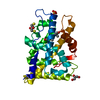
 Components
Components Homo sapiens (human) / Gene: AR, DHTR, NR3C4 / Plasmid: pGEX / Production host:
Homo sapiens (human) / Gene: AR, DHTR, NR3C4 / Plasmid: pGEX / Production host: 


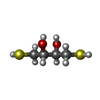






 X-RAY DIFFRACTION / Number of used crystals: 1
X-RAY DIFFRACTION / Number of used crystals: 1  Sample preparation
Sample preparation ROTATING ANODE / Type: RIGAKU RU200 / Wavelength: 1.5418 Å
ROTATING ANODE / Type: RIGAKU RU200 / Wavelength: 1.5418 Å Processing
Processing MOLECULAR REPLACEMENT
MOLECULAR REPLACEMENT Movie
Movie Controller
Controller





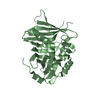
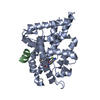
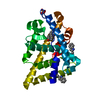
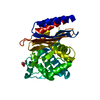
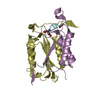
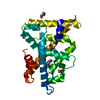
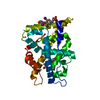

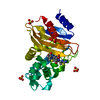
 PDBj
PDBj











